ASUS RT-AC66U 802.11ac Wireless-AC1750 Router Review
ASUS RT-AC66U: Wireless Speed Tests
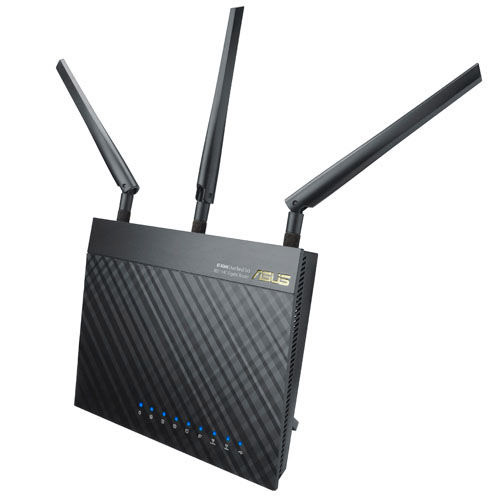 Once again, we wanted to test our router in a real world application so we connected the ASUS RT-AC66U to a PC running Windows 7 64-bit and configured it using “Automatic” settings for both 2.4Ghz and 5Ghz bands. We took our Alienware M17XR4 to use as a target laptop client. The Alienware M17XR4 features an Intel i7-3610QM CPU with 6GB RAM running Windows 7 64-Bit, and an NVIDIA GeForce GTX 660M. More importantly for our tests, it is outfitted with a Qualcomm Antheros Killer Wireless-N 1103 Network Adapter. The Killer 1103 is a three-antenna network adapter that connects at up to 450Mbps over 802.11n and features reduced power consumption and Wi-Fi Direct. Much has been written about the Killer NIC technology in recent years but there is no doubt that this 3-antenna solution will give us the best possible wireless throughput for our test. Many people don’t have an 802.11ac device in their arsenal yet, so we are looking at some of the best speeds this router can do without the use of Wireless-AC.
Once again, we wanted to test our router in a real world application so we connected the ASUS RT-AC66U to a PC running Windows 7 64-bit and configured it using “Automatic” settings for both 2.4Ghz and 5Ghz bands. We took our Alienware M17XR4 to use as a target laptop client. The Alienware M17XR4 features an Intel i7-3610QM CPU with 6GB RAM running Windows 7 64-Bit, and an NVIDIA GeForce GTX 660M. More importantly for our tests, it is outfitted with a Qualcomm Antheros Killer Wireless-N 1103 Network Adapter. The Killer 1103 is a three-antenna network adapter that connects at up to 450Mbps over 802.11n and features reduced power consumption and Wi-Fi Direct. Much has been written about the Killer NIC technology in recent years but there is no doubt that this 3-antenna solution will give us the best possible wireless throughput for our test. Many people don’t have an 802.11ac device in their arsenal yet, so we are looking at some of the best speeds this router can do without the use of Wireless-AC.
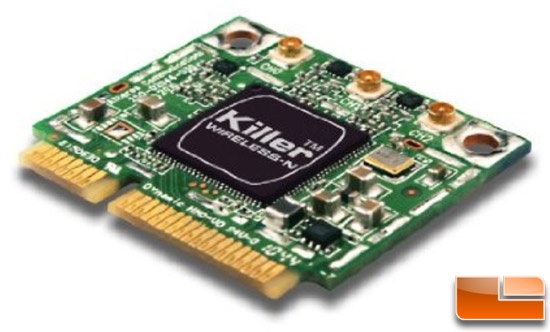
We took our Alienware laptop and moved it 25-feet away from the ASUS router. We didn’t tell the client anything more than the SSID name for each router tested and let it automatically choose the channel to connect to. All the routers were set to “Unsecure Mode” (for fastest data throughput), and with WMM / QoS turned ON. After connecting, we ran the PC application LAN Speed Test (LST) to measure file transfer and network speeds. LST builds a file in memory and then transfers the packet without the effects of windows file caching. It then reports the time and calculates the network speed.
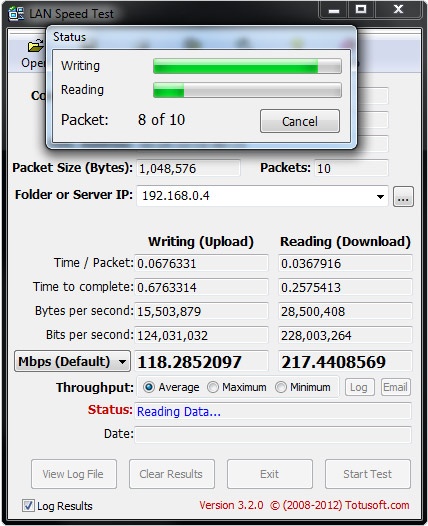
We repeated the test 2 more times rotating the router 90 degrees after each test to make sure that the router’s speed was affected adversely by its orientation.
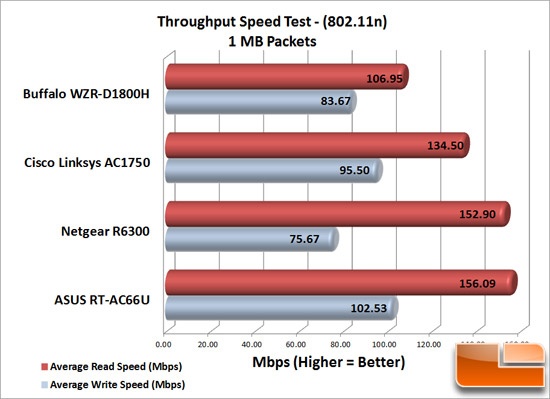
Benchmark Results: The ASUS RT-AC66U shoots to the top of our 1MB throughput test for Average Read speeds. The ASUS RT-AC66U also clocks in with the fastest Average Write speed of our 802.11AC-enabled routers. While there is only a small difference in top Read speeds between the Netgear R6300 and ASUS RT-AC66U, the ASUS shows us a 35% improvement in Average Write speeds over the Netgear (and a 7% increase over the Cisco Linksys AC1750).
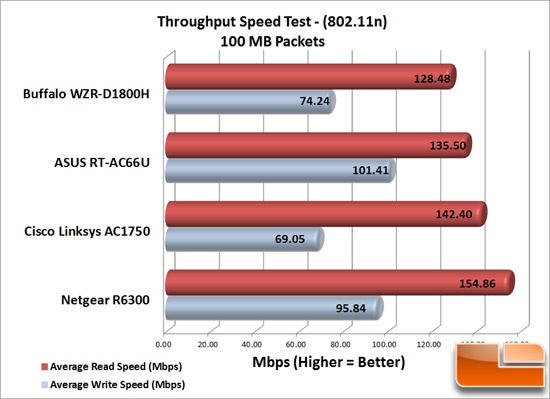
Benchmark Results: Here we see how larger data packets do with our AC-routers. Testing these data packet sizes is important since this best simulates multimedia streaming wirelessly over a network. The Netgear R6300 router still is the cream of the crop with respect to Average Read speeds. The ASUS RT-AC66U measures the best Average Write speeds just ahead of the Netgear R6300. We have seen in the past that using a 802.11ac in “mixed-mode” (ie. AC + N) doesn’t harm the throughput in any way. In fact, everyone of these routers shows that 802.11n-only devices work faster when used with AC-router.
These results are critical for those who don’t have a many 802.11ac devices connected to their network. What this shows is that even with non-wireless-AC devices, your will see a good improvement on speeds when using one of these routers.

Comments are closed.